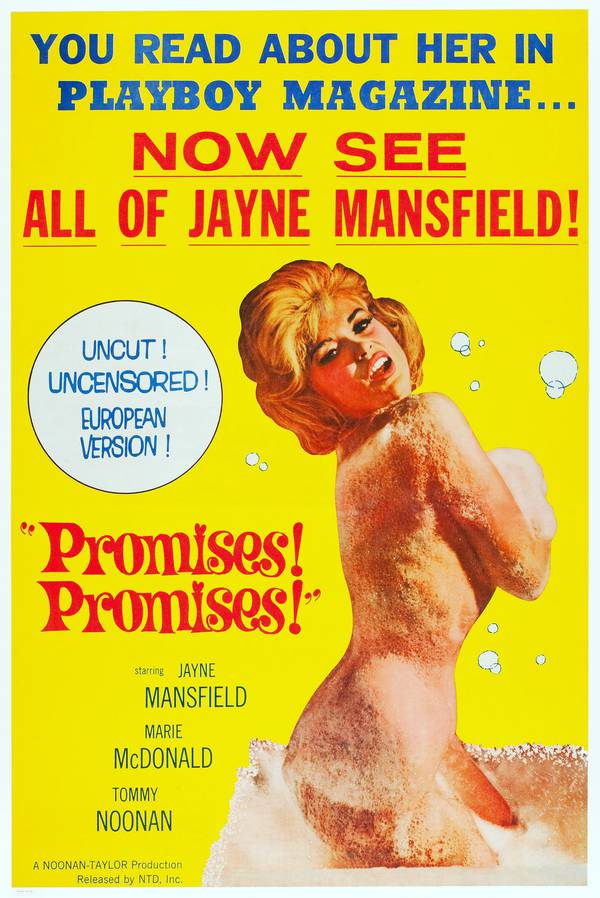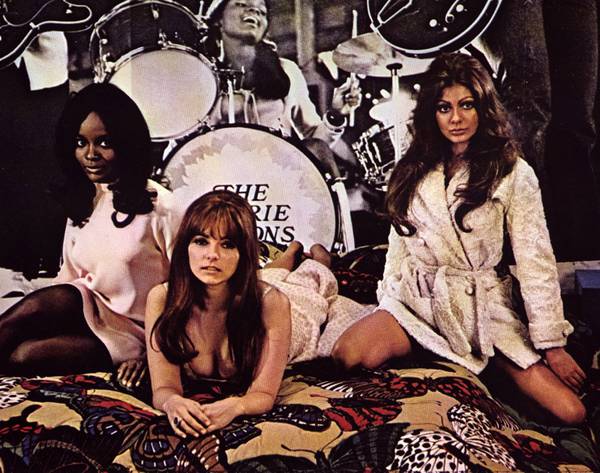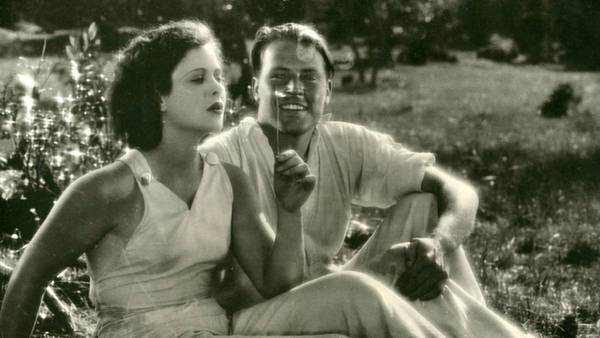[ad_1]
The history of cinema tells a parallel history of censorship, protests, and moral guardians such as the Catholic Legion of Morals, determined to keep some notorious films out of prying eyes.
Rebecca Fons, programming director of the Gene Siskel Film Center, thought it would be a mature series for this part of history. Especially now, he says, “with book bans in Florida and across the country and the removal of textbooks from the school curriculum. We may have thought we were past the era when literature or the arts were censored, banned, or at least controversially regulated. I felt like he could do something with an eclectic and weird cast.”
The “Contra/Banned” series covers the period from 1932 to 1988 in a 10-film poll of films that were protested, edited in the studio, slapped with an X grade, or outright banned by the feds.
Brilliant cinematographer Jack Cardiff’s relatively dark 1968 film “Girl on a Motorcycle”, starring Marianne Faithfull, received an X rating for the first time.
There is also “L’Amore” (1948), Roberto Rossellini’s pairing of two short films starring Anna Magnani. The Italian star plays a woman who believes she is pregnant with St. Joseph in her second movie Miracle. Well! Boom! Condemned by the Legion of Decency, the US distribution of the film faced fierce legal opposition until the US Supreme Court unanimously ruled in favor of the distributor.
The series also includes the director’s cut of “RoboCop” (1987); “Ecstasy” (1933); “The Last Temptation of Christ” (1988); “Words! Promise! (1963); “Beyond the Valley of the Dolls” (1970); “Scarface” (1932); “Pink Flamingos” (1972); and “Fiery Creatures” (1963).
Our interview with Fons has been edited for clarity and length.
Question: Can you summarize the series for us? You’ve programmed some instances of outright ban, and in other cases, you’re dealing with films that cause significant controversy or make history in their own way but reach a large audience.
A: Right. Some movies were literally stopped at the US border or at the door of a movie theater. And then there’s “RoboCop,” an example where the Motion Picture Association of America (now known as the Motion Picture Association) told the director to make his film a slightly less violent film to avoid an NC-17 rating. (The NC-17 replaced the X in 1990.)
In the case of “Fiery Creatures,” Jack Smith’s movie (only 43 minutes long) was screened once in New York, and the next screening was considered obscene. Filmmakers, exhibitors, and projectors were actually arrested; Jonas Mekas was one of them.
Question: Since it’s a Chicago story from start to finish, let’s talk about “Scarface,” the great and seriously destabilizing gangster classic of 1932. It took a long time for this to even show on a movie screen in Cook County, right? Nine years after it was published?
A: I was a little hesitant to include “Scarface” in this series because we didn’t show it a long time ago. But I really didn’t want this show to be all sexy stuff. Like many cities, Chicago had major issues with “Scarface”, and the city censorship board run by the police department demanded a remake of the movie and added lots of stuff to make it less flattering or sympathetic to the gangsters. And less sexual. (In director Howard Hawks’ film, largely written by Chicago-bred veteran Ben Hecht, mob boss Tony Camonte has openly incestuous feelings towards his party-girl sister Cesca.) appeared under the title.
Q: Although the movie isn’t all that embarrassing. Definitely.
A: Right. The “Scarface” title is ridiculous, followed by an apology.

Question: In your “Contra/Forbidden” series, you are definitely not dealing with magnanimity. For example: “Words! Promises!” was a huge success at the time and is generally credited with the first nude scenes of the well-known star Jayne Mansfield.
A: “Words! Promise! very strange. It’s not a great movie. But since Jayne Mansfield is naked – as well – you can understand why 1963 was shocking. Finding this proved to be a fascinating detective experience, and we brought Frankenstein back to life as best we could.
It turns out that there are two editions of this in the archives of the Academy of Motion Picture Arts and Sciences, and the Academy lab is doing a full print review and a print report. It turned out that a raid was a TV cut, so it was a no-no. In fact, all nude scenes were removed in the other edition. I wanted to say jarring cuts. Basically all nudity happens in the first seven minutes; Jayne is in the tub or in bed and then they come back to those scenes with flashbacks.
We formatted it for digital projection, with the first seven minutes being displayed digitally. It will look ok. We’ll then move on to the 35 millimeter print projection for the remainder. It will be very, very clear to the audience where the cuts were made. Tommy Noonan starts having a flashback thinking about Jayne, and then boom, it’s on to the next scene. Like pages torn from a book.
Q: Some call it “Girl on a Motorcycle”, which comes out five years after “Words!” Promises!” actually less obvious –
A: Very tame! And it got the first X grade! Marianne Faithfull appears naked for a moment and then rides around on her motorcycle, recalling her love affairs. “Beyond the Valley of the Dolls”, another X-rated movie we showed, falls into the “hold-hold” category.

Question: Since director Russ Meyer’s screenplay was written by Roger Ebert, we need to point out the obvious perspective in Chicago. So what do you mean by hold-hold?
A: Widespread disapproval. “Valley of the Dolls” was a hugely popular book by Jacqueline Susann and turned into a hugely popular movie. Twentieth Century Fox hired Russ Meyer to direct “Beyond,” and the film was quite deceptively marketed as a sequel. But there were great concerns about what kind of movie this would be; sex, drugs, rock ‘n’ roll. And then the Fox board, including Grace Kelly, who was then Princess Grace of Monaco, thought that was beyond the limit. Unsuitable. I’m pretty sure you’ve seen it holding pearls that are literally so beautiful.
We look at the reasons why these movies and people are objectionable. And to think about how artists sometimes circumvent protests against their work. Two of the movies we showed were “Scarface” and the Hungarian movie “Ecstasy” starring Hedy Lamarr is almost a century old. This is a beautiful, pompous and romantic exploration of a woman’s sexuality. Almost no nudity.

S: implied female orgasm For some people, that’s what really made it. As you wrote in the Film Center program notes, the film was stopped by the US Customs Service for being “dangerously immoral.”
A: Right. Hard to believe. But what are we going to think of what’s going on 30, 40 years from now, right now?
I hope Chicago can remain the bastion of sanity. At least when it comes to movies, no one is forcing anyone to watch something they don’t want to see. We live in a city that allows us to invite people to discover these films, and we try to show you what filmmakers want to be seen. We live in a city where we can reflect all of this. This is special and should not be taken lightly. And it must be protected.
“Love” (1948): 1 September 18:00; 13:30 September 9
“RoboCop: Director’s Editing” (1987): 1 September 20:00; 18:00 September 11
“Ecstasy” (1933): 2 September 3 pm; 6 September 18:00
“Girl on the Motorcycle” (1968): 2 September 17:00; 13:30 September 10
“The Last Sin of Jesus” (1988): September 2, 19:30; 15:30 September 9
“Words! Promise! (1963): 3 in the afternoon of September 3; 6 September 18:00
“Beyond the Valley of the Dolls” (1970): September 3, 17:15; 20:30 September 8
“Scarred Face” (1932): 18:00 September 4; 10 September 15:45
“Pink Flamingos” (1972): 6 September 20:00; 19:00 September 9
“Fiery Creatures” (1963): 11 September 20:30
Until September 11, Gene Siskel Film Center, 164 N. State St.; tickets for individual screenings $13 siskelfilmcenter.org
Michael Phillips is a Tribune critic.
excitement @phillipstribune
[ad_2]
 Best American Comics News bestamericancomics.com started its broadcasting life on December 21, 2022 and aims to offer original content to users. Aiming to share information in technology, science, education and other fields, bestamericancomics.com aims to provide its readers with the most up-to-date and comprehensive. Since the content of the site is created by expert writers, readers are reliable and accurate referrers.
Best American Comics News bestamericancomics.com started its broadcasting life on December 21, 2022 and aims to offer original content to users. Aiming to share information in technology, science, education and other fields, bestamericancomics.com aims to provide its readers with the most up-to-date and comprehensive. Since the content of the site is created by expert writers, readers are reliable and accurate referrers.


